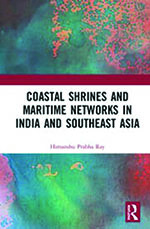The wide prevalence of scripts, languages, architectural forms and iconography with a clear provenance from India in a wide swathe of South East Asia from quite early in the first millennium, has interested many in India almost from the beginning of modern history writing and archeological investigation in the country. In the early decades of the twentieth century, to Indian historians, many of whom were deeply imbued with the emergent nationalist spirit, this was clear evidence of a ‘Greater India’ of the past: India having its own colonies provided solace to redeem their current subject status. In time, and especially with Independence, the ‘Greater India’ school lost its sheen and to a new generation of historians ascribing a quasi-imperial past for India was seen as incompatible with the actual evidence; there was certainly none which suggested political control from India of these territories. There was also pushback from historians and intellectuals in the rapidly decolonizing new nations of South East Asia, loath to accept an ancient colonial hierarchy even as they struggled against a modern one. The ‘Greater India’ school therefore withered away for good reason, but with that fraternity of historians incidentally also disappeared the most powerful impulse in India to date to study non-Indian history.
The problem however remained of how to understand and explain the comprehensive presence of Indian or Indic motifs and metaphors even in regions quite distant from the South Asian mainland and often in places much closer to China and well within its zone of cultural spread and political influence. Other explanations that emerged included ‘Indianization’ or describing these states as ‘Indianized’. This encountered similar sets of issues as ‘Greater India’, and most prominent was the question of agency of Southeast Asian societies in accepting such influences. Other explanations have emerged—for instance, was the entire South-South East Asia region a vast Sanskrit or even Buddhist ‘cosmopolis’? Yet on the question of ‘agency’ and why only some motifs and ideas travelled, each such explanation faced pushback and rejection. An alternative paradigm of ‘Localization’ emphasized impulses indigenous to these societies as offering a more satisfactory explanation of why certain Indian ‘influences’ got transplanted and others did not; in other words, what appeared on the surface as ‘Indian’ was in substance much more grounded and locally evolved than superficial similarities would suggest. In an early classic statement of this approach, it was posited that what drove the process of the transplanting of Indian influences was local elites seeking to enhance their legitimacy and doing so by summoning a Brahman priesthood to their courts and with whom travelled Indian ideas and symbols.
Continue reading this review

